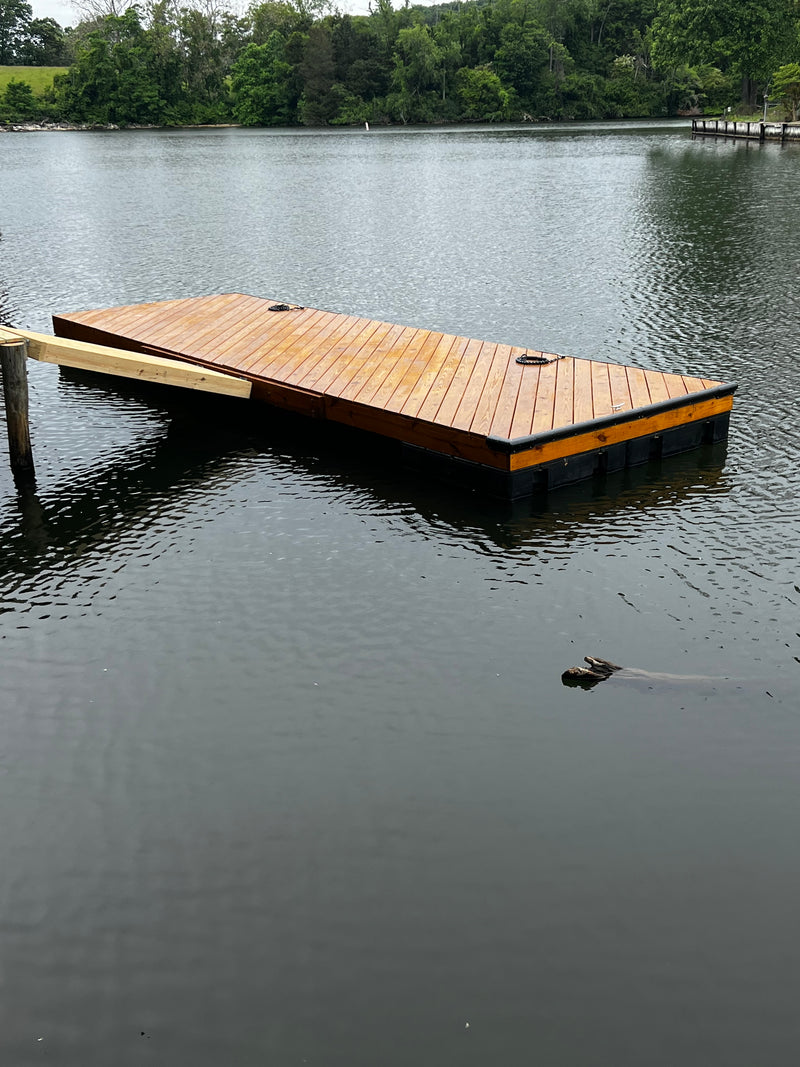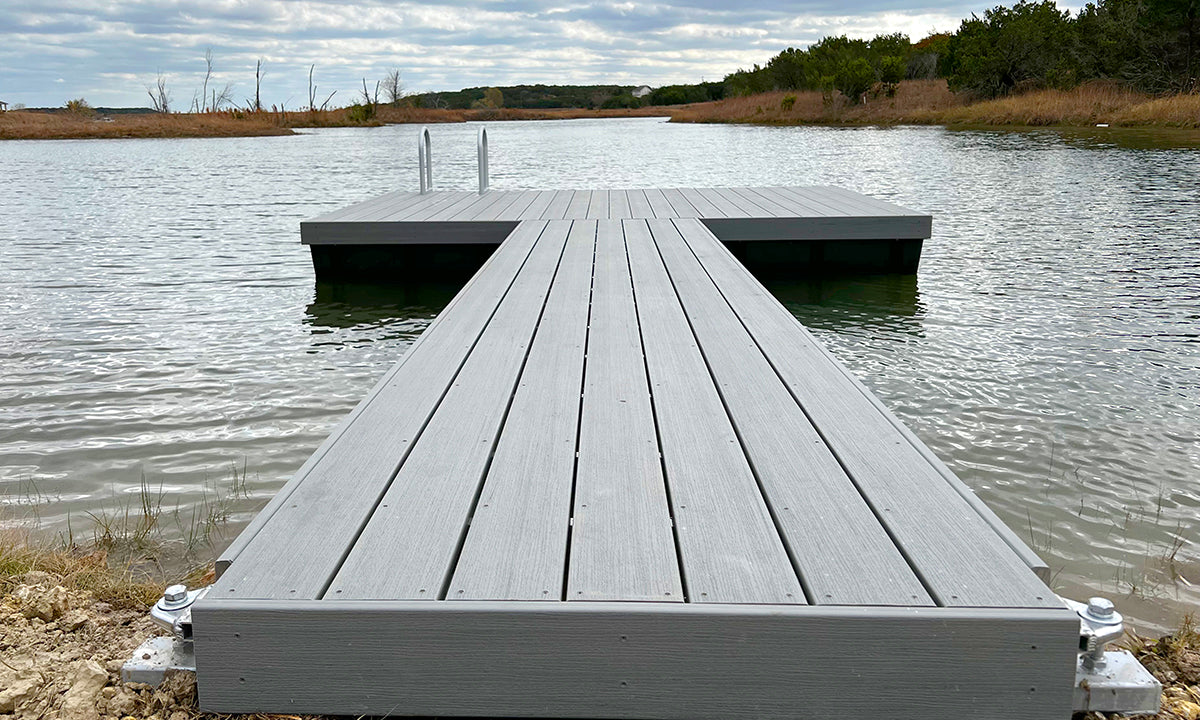Upgrade Your Beachfront With Durable Floating Docks
Upgrading your waterfront with sturdy floating docks can significantly enhance both performance and visual appeals, supplying a flexible service for various water tasks. These frameworks are created to adapt to ever-changing water degrees, ensuring security and availability throughout the periods. With an array of products available, including low-maintenance choices and standard timber, choosing the ideal dock can enhance your individual style and satisfy useful requirements. Recognizing the nuances of setup and maintenance is vital for making certain longevity and performance. When making this investment?, what aspects should you take into consideration.
Benefits of Floating Docks
Floating docks deal a multitude of advantages that enhance their appeal for different maritime applications. Unlike standard fixed docks, floating docks increase and loss with the tide, making certain constant ease of access for watercrafts and boat regardless of ecological problems.
Furthermore, floating docks are less complicated to move and set up, offering adaptability for seasonal or short-lived usage. Their modular style permits modification to fit certain requirements, whether for personal marinas, residential watersides, or business applications.
Additionally, floating docks develop marginal disturbance to the marine setting, protecting neighborhood communities and reducing the possibility of disintegration. They likewise supply improved security and stability for customers, as their resilient nature supplies an extra flexible surface area than rigid structures.
In addition, floating docks can assist in a diverse range of activities, such as angling, swimming, and recreational boating, making them a useful property for waterside growth. Their convenience and practicality make floating docks a preferred choice for a variety of maritime jobs.
Selecting the Right Materials
Picking proper materials for floating docks is important to their durability, efficiency, and overall efficiency. When picking products, take into consideration elements such as ecological exposure, upkeep requirements, and architectural integrity. Usual products include wood, plastic, light weight aluminum, and composite options, each offering distinctive benefits and disadvantages.
Wood, while aesthetically pleasing, calls for regular upkeep to avoid rot and degeneration. Pressure-treated wood can boost resilience, yet it may still surrender to water damages with time. Plastic drifts, often made from high-density polyethylene, are immune to deterioration and need marginal upkeep, making them an attractive option for low-maintenance applications.
Aluminum is another practical alternative, recognized for its stamina and lightweight residential properties. It is immune to rust and can stand up to harsh climate condition, although it may be much more pricey than other materials. Composite products combine the most effective attributes of timber and plastic, providing a durable and low-maintenance option that imitates the appearance of timber without the connected disadvantages.
Ultimately, the option of product must line up with the meant use, ecological considerations, and budget constraints, ensuring a functional and resilient floating dock that satisfies your details requirements.
Installation Process Overview
The successful installment of a drifting dock relies upon mindful planning and execution, guaranteeing that it runs successfully in its intended environment. The very first step includes analyzing website conditions, consisting of water depth, shoreline features, and prevailing climate patterns, which will educate the dock style and anchoring system.
Following the site assessment, the following stage is to prepare the floating dock parts. This includes putting together the frame, securing floats, and connecting any essential hardware. It is essential to make certain that all links are robust and water-resistant to hold up against aquatic problems.
When the dock is assembled, the installation process begins with placing the dock in the water. This can include a crane or various other lifting devices, specifically for bigger structures. Appropriate alignment is essential for capability and security.

Upkeep Tips for Durability
Normal upkeep is vital for guaranteeing the longevity and optimum efficiency of a drifting dock. To achieve this, start with regular assessments at the very least two times a year, concentrating on the integrity of the dock's framework, including the flotation protection gadgets and linking equipment. Try to find signs of wear, damages, or corrosion, and address any kind of issues promptly to prevent additional wear and tear.
Cleaning up is an additional vital facet of maintenance. Remove debris, algae, and barnacles from the dock's surface to stop unsafe problems and preserve aesthetic charm. Make use of a soft brush and a moderate detergent to stay clear of damaging the dock's products.
Additionally, make certain that the dock is correctly secured and safeguarded to stand up to seasonal adjustments in water degrees and weather condition problems. Check the anchoring system for stability and make modifications as essential.
Enhancing Your Outside Aesthetic
To develop an aesthetically attractive outside room, incorporating a floating dock can considerably boost the overall visual of your beachfront residential property. Floating docks are not only functional yet can likewise serve as a striking prime focus that complements the natural environments - floating dock services. Offered in numerous products and layouts, these docks can be personalized to match your property's building design and landscape
The enhancement of decorative components, such as integrated illumination or elegant barriers, better elevates the dock's aesthetic appeal. Consider using natural wood coatings, which mix perfectly with the atmosphere, or choosing modern-day products like light weight aluminum or composite outdoor decking that use a streamlined, modern look.
Tactically positioning planters or seating areas on or around the dock can create welcoming areas that urge leisure and enjoyment of waterfront views. In addition, including colors and appearances that balance with your landscape will create a natural aesthetic throughout your exterior area.

Conclusion

Updating your waterside with sturdy floating docks can considerably enhance both functionality and looks, supplying a flexible service for numerous water tasks. Unlike conventional set docks, floating docks surge and fall with the trend, guaranteeing constant availability for watercrafts and boat no matter of ecological conditions.Picking ideal materials for floating docks is crucial to their longevity, performance, and general effectiveness.When the dock is constructed, the installment procedure begins with placing the dock in the water.In summary, floating docks deal many advantages, including flexibility to water degree modifications and a variety of material alternatives.